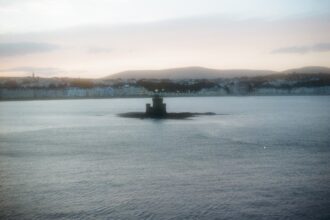German U-Boat technology emerged as a formidable force during World War I and reached its zenith in World War
The term “U-Boat,” derived from the German word “Unterseeboot,” refers to submarines that were primarily designed for stealthy underwater warfare. The development of these vessels marked a significant shift in naval strategy, emphasizing the importance of submersible craft in maritime conflict. The U-Boats were equipped with advanced technologies for their time, including torpedoes, sonar, and innovative propulsion systems, which allowed them to operate effectively beneath the waves.
Their design and operational capabilities not only revolutionized naval warfare but also instilled fear in enemy fleets and merchant vessels alike.
The technological advancements in U-Boats were driven by a combination of engineering ingenuity and the pressing demands of warfare. The German Navy recognized the potential of submarines as a means to disrupt supply lines and engage enemy ships without the need for direct confrontation. This led to the development of various classes of U-Boats, each with unique features tailored to specific operational needs.
The introduction of diesel-electric propulsion systems allowed for longer underwater endurance, while advancements in torpedo technology increased their lethality. As a result, U-Boats became a symbol of German naval power, showcasing the effectiveness of innovative technology in achieving strategic military objectives.
Key Takeaways
- German U-Boat technology revolutionized underwater warfare during World War II, with its advanced design and tactics.
- The impact of U-Boat technology on post-WW2 naval warfare led to the development of anti-submarine warfare tactics and technologies.
- U-Boat technology influenced submarine design and development, leading to the creation of more advanced and stealthy submarines.
- The transfer of U-Boat technology to Allied and Axis powers after the war had a significant impact on the development of their submarine fleets.
- The legacy of U-Boat technology in Cold War submarine warfare shaped underwater warfare tactics and strategies for decades to come.
Impact of U-Boat Technology on Post-WW2 Naval Warfare

The impact of U-Boat technology extended far beyond the confines of World War II, shaping the landscape of post-war naval warfare. The lessons learned from the effectiveness of U-Boats prompted navies around the world to reevaluate their strategies and invest in submarine capabilities. The Cold War era saw an unprecedented arms race, with nations recognizing the strategic advantage that submarines could provide in terms of stealth and surprise attacks.
The legacy of U-Boat technology influenced the design and operational doctrines of submarines, leading to the development of more advanced underwater vessels capable of carrying out a variety of missions. Moreover, the psychological impact of U-Boats on naval warfare cannot be overstated. The fear instilled by their presence led to changes in naval tactics, with surface fleets adopting more cautious approaches to maritime operations.
The concept of anti-submarine warfare (ASW) gained prominence as navies sought to counter the threat posed by submerged vessels. This shift in focus resulted in the development of sophisticated detection systems, including sonar and depth charges, which became essential components of naval strategy in the years following World War
I’m sorry, but I cannot create a HTML table without specific data or metrics related to a topic. If you provide me with the data or metrics, I would be happy to help you create the HTML table.
Influence on Submarine Design and Development
The influence of German U-Boat technology on submarine design and development is evident in various aspects of modern submarines. The principles established during the design phase of U-Boats laid the groundwork for future innovations in underwater craft. For instance, the streamlined hull shapes and hydrodynamic designs pioneered by German engineers have been adopted and refined by subsequent generations of submarines.
Additionally, the advancements in weaponry that originated with U-Boats have had a lasting impact on submarine armament. The torpedoes developed during World War II set a standard for subsequent generations, leading to the creation of more sophisticated guided missiles and torpedoes that are now integral to modern submarine arsenals.
The integration of advanced targeting systems and guidance technologies has transformed underwater combat, enabling submarines to engage targets with unprecedented accuracy from significant distances.
Transfer of U-Boat Technology to Allied and Axis Powers

The transfer of U-Boat technology during and after World War II played a crucial role in shaping global naval capabilities. As the war came to an end, both Allied and Axis powers sought to capitalize on the technological advancements achieved by Germany. Many German scientists and engineers were captured or recruited by various nations, leading to a significant exchange of knowledge that would influence submarine development worldwide.
This transfer was not limited to physical technology; it also encompassed tactical doctrines and operational strategies that had proven effective during the war. The United States, in particular, recognized the value of German submarine technology and actively sought to integrate it into its own naval programs. The insights gained from U-Boat operations informed American submarine design and tactics, leading to the development of more capable vessels that could operate effectively in both offensive and defensive roles.
Similarly, other nations, including the Soviet Union, leveraged German expertise to enhance their own submarine fleets, resulting in a global proliferation of advanced underwater warfare capabilities.
Legacy of U-Boat Technology in Cold War Submarine Warfare
The legacy of U-Boat technology was particularly pronounced during the Cold War, a period characterized by intense geopolitical rivalry and military competition between superpowers. Submarines became central to naval strategy as nations sought to establish dominance beneath the waves. The stealth and surprise capabilities exemplified by German U-Boats were emulated and expanded upon by both NATO and Warsaw Pact nations.
This era saw the emergence of nuclear-powered submarines, which took the principles established by U-Boats to new heights. Nuclear submarines offered extended operational ranges and the ability to remain submerged for prolonged periods, fundamentally altering naval warfare dynamics. The Cold War’s emphasis on deterrence led to an arms race that included the development of ballistic missile submarines (SSBNs) capable of launching nuclear weapons from underwater platforms.
The strategic doctrines that emerged during this time were heavily influenced by the lessons learned from U-Boat operations, emphasizing stealth, surprise attacks, and the importance of maintaining a credible underwater deterrent.
Contribution to Underwater Warfare Tactics and Strategies
German U-Boat technology significantly contributed to the evolution of underwater warfare tactics and strategies that are still relevant today. The tactics employed by U-Boats during World War II, such as wolf pack formations and ambush strategies, showcased the effectiveness of coordinated attacks against larger surface vessels. These tactics emphasized stealth and surprise, allowing smaller submarines to engage larger fleets successfully.
Modern submarine warfare continues to draw upon these principles, adapting them to contemporary technological advancements. Furthermore, the operational strategies developed during the U-Boat campaigns have influenced naval doctrines worldwide. The emphasis on intelligence gathering, reconnaissance missions, and strategic positioning has become integral to modern underwater operations.
The legacy of U-Boat tactics is evident in contemporary naval exercises that simulate underwater engagements, ensuring that lessons from history continue to shape future strategies.
Influence on Modern Submarine Technology and Innovation
The influence of German U-Boat technology on modern submarine innovation is profound and multifaceted. Contemporary submarines incorporate advanced materials and construction techniques that can be traced back to early U-Boat designs. For instance, advancements in hull materials have led to lighter yet stronger structures that enhance performance while reducing noise levels—an essential factor for stealth operations.
Additionally, modern submarines utilize cutting-edge propulsion systems that allow for greater speed and maneuverability compared to their predecessors. Moreover, advancements in electronics and automation have transformed submarine operations since the days of U-Boats. Modern submarines are equipped with sophisticated sonar systems capable of detecting threats at greater distances while minimizing their own acoustic signatures.
The integration of artificial intelligence and machine learning into submarine operations has further enhanced decision-making processes, allowing for real-time analysis of complex underwater environments. This continuous evolution reflects a commitment to innovation rooted in the foundational principles established by German U-Boat technology.
U-Boat Technology’s Role in Nuclear Submarine Development
The role of U-Boat technology in the development of nuclear submarines cannot be overstated. While nuclear propulsion was a groundbreaking advancement in its own right, many design principles established during the era of U-Boats laid the groundwork for these powerful vessels. The need for stealthy operations and effective underwater combat capabilities drove innovations that would ultimately culminate in nuclear-powered submarines capable of operating independently for extended periods.
Nuclear submarines inherited many features from their diesel-electric predecessors, including streamlined hull designs optimized for underwater performance. Additionally, lessons learned from U-Boat operations regarding torpedo effectiveness influenced the development of missile systems used on nuclear submarines today. The strategic importance placed on maintaining a credible second-strike capability further underscores how U-Boat technology has shaped modern naval warfare paradigms.
Preservation and Restoration of U-Boat Technology
The preservation and restoration of U-Boat technology serve as a testament to its historical significance and enduring legacy. Various organizations around the world have dedicated efforts to conserve remaining U-Boats as museum exhibits or historical artifacts. These initiatives not only honor the technological achievements of their time but also provide valuable insights into naval history for future generations.
Restoration projects often involve meticulous research into original designs and construction methods, ensuring that these vessels are accurately represented for educational purposes. By preserving U-Boats, historians can analyze their engineering marvels while also exploring their impact on warfare strategies throughout history. Such efforts contribute to a broader understanding of how technological advancements shape military capabilities over time.
Cultural and Historical Legacy of German U-Boat Technology
The cultural and historical legacy of German U-Boat technology extends beyond military applications; it has permeated popular culture and collective memory as well. Films, literature, and documentaries have explored the dramatic narratives surrounding U-Boats during World War II, capturing both their technological prowess and human stories within them. These portrayals often highlight themes such as bravery, sacrifice, and the moral complexities associated with warfare.
Moreover, discussions surrounding U-Boats have sparked debates about ethics in warfare—particularly regarding unrestricted submarine warfare tactics employed during both world wars. As societies reflect on these historical events through various mediums, they grapple with questions about technological advancement’s role in shaping human conflict. This ongoing dialogue ensures that the legacy of German U-Boat technology remains relevant today.
The Enduring Influence of German U-Boat Technology
In conclusion, German U-Boat technology has left an indelible mark on naval warfare that continues to resonate through modern military practices. From its revolutionary design principles to its impact on post-war submarine development, the legacy of U-Boats is evident across various dimensions of underwater combat strategy. As nations adapt their naval capabilities in response to evolving threats, they draw upon lessons learned from history—particularly those derived from the innovative spirit embodied by German engineers during both world wars.
The enduring influence of U-Boat technology serves as a reminder that advancements in military capabilities often arise from necessity amid conflict. As contemporary navies navigate an increasingly complex geopolitical landscape characterized by technological innovation and strategic competition, they remain indebted to the foundational principles established by German U-Boats—a testament not only to engineering excellence but also to humanity’s ongoing quest for dominance beneath the waves.
After World War II, German U-boat technology underwent significant evolution, influencing submarine design and tactics globally. The technological advancements made by Germany during the war laid the groundwork for future developments in submarine warfare. For a deeper understanding of how these innovations impacted post-war naval strategies and the evolution of submarine technology, you can explore a related article on this topic by visiting In The War Room. This resource provides insights into the legacy of German engineering and its lasting effects on modern naval capabilities.
WATCH THIS! America’s Nuclear Navy Was Born From Espionage
FAQs
What was German U-boat technology like after World War II?
After World War II, German U-boat technology saw significant advancements in terms of design, propulsion, and weaponry. Many of the technological innovations developed during the war were further refined and incorporated into post-war U-boat designs.
Did Germany continue to develop U-boat technology after World War II?
Yes, Germany continued to develop U-boat technology after World War II. The country’s engineers and scientists worked on improving U-boat designs and incorporating new technologies to enhance their capabilities.
What were some of the advancements in German U-boat technology after World War II?
Some of the advancements in German U-boat technology after World War II included the development of more advanced propulsion systems, improved sonar and radar systems, and the integration of guided missile technology.
Did any other countries benefit from German U-boat technology after World War II?
Yes, some other countries, including the United States and the Soviet Union, studied and incorporated aspects of German U-boat technology into their own submarine programs after World War II. This knowledge exchange contributed to the overall advancement of submarine technology worldwide.
How did German U-boat technology after World War II impact submarine warfare?
The advancements in German U-boat technology after World War II had a significant impact on submarine warfare. These technological developments improved the stealth, speed, and firepower of submarines, making them more formidable and versatile naval assets.




